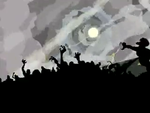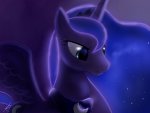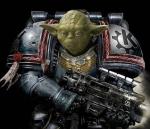How do I mount .cue file?
I have a cd image that is not a .iso but a .cue. I cannot mount it. I use ubuntu 10.10 64 bits, and I’ve tried a lot of programs. furiosmout just says it is not a image file, and it just didn’t work. I found a program (acetone) that can convert .cue in .iso, but it says I need other packages (that I could not come to). I was looking for an easy way. Any help?
4 Answers 4
Typically a .cue file will be accompanied by a .bin file that contains the actual image data. If you’d like to convert it to the .iso format, the Iso9660 Analyzer Tool ( apt-get install iat ) should do the trick:
iat my_image.bin my_new_image.iso Seems like the command line format has changed, I had to use: iat my_image.bin > my_new_image.iso (version v0.1.3)
This has been bothering me in the past and I never did find a solution. I set out for an answer and found it on a whim; these instructions are derived from the script on that site.
You’ll need the .bin file that should be accompanying the .cue file. Note the file sizes: the .bin is likely several hundred MB, while the .cue is probably less than one KB. If you have a large .cue file, it’s possible it’s named incorrectly, so it doesn’t hurt to try this anyway:
- Install fuseiso ( sudo apt-get install fuseiso )
- Run fuseiso -p image_file.bin /path/to/mount , and you should see the mount point fill up with files. This can be run as a normal user, and the directory doesn’t have to exist.
- When finished, run fusermount -u /path/to/mount to unmount and remove the directory fuseiso created.
I tried it and got errors for an audio CD .bin/cue, which was created by ‘brasero’ .. This is from info fuseiso : «One major limitation of .BIN images is that fuseiso does not handle .CUE files in any way, and thus can work with only the first track of .BIN images.»
I also tried to mount a .bin created by brasero, and get init: wrong standard identifier in volume descriptor 0, skipping.. . So it looks like fuseiso it doesn’t work with brasero’s .bin format.
And also bchunk can do the same trick as iat:
bchunk IMAGE.bin IMAGE.cue ANYNAME.iso The best way is to use cdemu; I regularly use this utility for mounting bin/cue pairs. The program doesn’t seem to be in the repositories, but there is a ppa available at Launchpad; you can install it with these steps:
sudo add-apt-repository ppa:cdemu/ppa sudo apt-get update sudo apt-get install gcdemu cdemu-client Just a simple sudo apt-get install cdemu , as suggested here, won’t work for this ppa. More information on ppas and how to use them is available here.
As outlined in the man page, and reiterated in this useful article, it is simple to use. You can either use the gcdemu gui or issue cdemu commands in terminal.
Just specify the location of your cue/bin pair (both must be present in the same directory), and run, for example:
cdemu load 0 /home/mike/isos/Timeshock.cue To check that it has loaded, run cdemu status , which will return:
Devices' status: DEV LOADED FILENAME 0 1 /home/mike/DOS/TIMES/Timeshock.cue 1 0 To see the device allocation, enter cdemu device-mapping :
Device mapping: DEV SCSI CD-ROM SCSI generic 0 /dev/sr2 /dev/sg4 1 /dev/sr3 /dev/sg5 You can also cd to /media and run ls to show the new entry:
cdrom floppy floppy0 ISOimage Timeshock ZEN STONE Strangely enough, I still had to click to mount them in my file manager (Thunar).
You can unload the image pair by specifying the same device ( 0 ) used when loading the pair:
If any errors occur, or you can’t load or unload your images, just logout and login again.
Side Note: I was able to run Timeshock (a Pinball game) in Wine as the image mounted by cdemu was seen in Wine as H: /media/Timeshock . (The game had been previously installed in Wine ) Some games, however, may require the disk to be assigned a D: drive letter in Wine .
You can also use cdemu for many other things than just mounting bin/cue pairs, and it may be very useful to anyone who has specific needs to emulate drives or to mount more unusual image types. More information is available at the official site, which details the options available.
CUE Splitting
This article describes how to split audio files using CUE metadata.
Installation
To split audio files you need shntool AUR . To split CD images in ISO or raw format you need bchunk .
The WAV format is supported natively for both input and output. To decode or encode files in other format you need an appropriate decoder. For example: flac , mac , or wavpack .
To tag audio files you need extra tools, such as cuetools , mp3info , or vorbis-tools . Alternatively, kid3 can be used for more advanced tagging needs, including importing from the MusicBrainz database for example.
Splitting
To split an audio file accompanied by a CUE sheet into tracks in .wav format, use the shnsplit command:
$ shnsplit -f file.cue file.wav
To split .bin file with CUE sheet into tracks in .wav format:
$ bchunk -v -w file.bin file.cue out
Format for output file names can be specified with the -t option ( %p for performer, %a for album, %t for title, and %n for track number):
$ shnsplit -f file.cue -t "%n %t" file.wav
shnsplit supports on-the-fly encoding to many lossless formats (see shntool(1) for the full list). For example to encode split tracks in the FLAC format:
$ shnsplit -f file.cue -o flac file.flac
Encoding options, including the encoder itself, can be specified with the -o parameter (see shntool(1) for details):
$ shnsplit -f file.cue -o "flac flac -s -8 -o %f -" file.flac
The formats supported by shntool and default encoder options can be view with the shntool -a command. If the desired format is not supported by shntool, it can be specified manually. For example, to encode split tracks directly into the Ogg Vorbis format:
$ shnsplit -f file.cue -o "cust ext=ogg oggenc -b 192 -o %f -" file.ape
This process can be applied to any other encoder, such as opusenc(1) or lame(1) , by specifying standard input (usually — ) as the source and %f as the destination. See the encoder’s man page for details.
Tagging
You will need cuetools to use cuetag.sh.
To copy the metadata from a CUE sheet to the split files you can use:
or if you need to select only certain files:
$ cuetag.sh file.cue track01.mp3 track02.mp3 track03.mp3 track04.mp3
cuetag.sh supports id3 tags for .mp3 files and vorbis tags for .ogg and .flac files.
Alternatives
- This is a script that splits and converts files to tagged FLAC: https://bbs.archlinux.org/viewtopic.php?id=75774.
- You may also use flaconAUR or flacon-gitAUR , a graphical Qt program that splits, converts and tags album audio files into song audio files. It also features automatic character set detection for CUE files.
- To avoid quality loss from transcoding mp3 files, mp3splt-gtk or mp3splt may be used to directly split mp3 files either manually or automatically with a provided cuesheet. Batch mode processing is also available.
Чем открыть bin+cue ?
Чем открыть bin+cue ? Стащил с оффопичного трекера blood во всех его реинкарнациях, но там не iso а эта хрень. Записывать неохота, лучще содержимое вытащить но чем вытаскивать ?
а если просто смонтировать как обычный образ?
cdemu
dosbox imgmount
bchunk, если нужен только ISO-образ без музыки
как ты его смонтируешь если такой файловой системы просто нет ?
А как ?
dosbox imgmount B2NIGHTMARE.cue
вылетает окно досбокса и больше ничего. dir выдает содержимое досовского корневика
Запустить dosbox и в нём ввести:
imgmount d . /file.cue -t iso
Так, стоп. Blood 2 — не DOS-игра, да и Audio-CD музыки там нет. Используйте bchunk или cdemu.
AITap ★★★★★ ( 03.09.12 12:57:42 MSK )
Последнее исправление: AITap 03.09.12 12:58:42 MSK (всего исправлений: 2)
тут выше сказали что он без музыки Игрушка без музыки как то не тае
Так там и первый blood, досовский, лучший, в таком же формате. Да, как в досбоксе узнать букву диска ?
Ступил 🙂 просто перекину образы в ~/dosprogs и примонтирую как диск С:, так ?
Да. Игру может понадобиться установить.
Можно сконвертировать в .iso.
man букварь, В первый класс в первый раз ? 🙂
. если там не больше одной дорожки. А если больше, то в один .iso нельзя.
http://digitalx.org/cue-sheet/syntax/
FILE «BLOOD_CD.bin» BINARY
TRACK 01 MODE1/2352
INDEX 01 00:00:00
TRACK 02 AUDIO
INDEX 01 39:19:15
TRACK 03 AUDIO
INDEX 01 44:31:15
TRACK 04 AUDIO
INDEX 01 51:40:15
TRACK 05 AUDIO
INDEX 01 54:36:15
TRACK 06 AUDIO
INDEX 01 59:13:15
TRACK 07 AUDIO
INDEX 01 64:05:15
TRACK 08 AUDIO
INDEX 01 67:16:15
TRACK 09 AUDIO
INDEX 01 70:12:15
FILE «B2NIGHTMARE.bin» BINARY
TRACK 01 MODE1/2352
INDEX 01 00:00:00
Блин, сначала первый потом второй
Обычно в ПеКа играх нечасто бывает много дорожек.
в ПеКа играх нечасто бывает много дорожек.
Расскажите это старым играм тех времён, когда фоновая музыка существовала в виде аудиодорожек по причине скудных вычислительных возможностей ПеКов.
В первом одна дорожка с данными в сыром формате (2352 байта на сектор, под данные обычно 2048 байт, остальное под контрольные суммы) и 8 аудиодорожек.
Во втором одна дорожка с данными в сыром формате.
Если нет привязок (например, в целях контроля оригинальности носителя) к наличию аудиодорожек или секторов с неверными суммами, можно вытянуть в iso дорожку с данными (скорее всего, 2048 байт каждого 2352 байтного сектора) и использовать по прямому назначению.
ps. Время — это координаты, mm:ss:ff, ff — кадры (сектора) из расчёта 75 кадров в секунду.
Второй blood допустим в iso конвертну чем нибудь вроде bchunk, как выше подсказали, но с первым придется все таки наверное через dosbox, c которым никогда дел не имел
Впрочем может просто поставить 98 ? :-), чем заниматься этим dosbox`oм, который сам по себе судя по отзывам редкостное тормозило.



